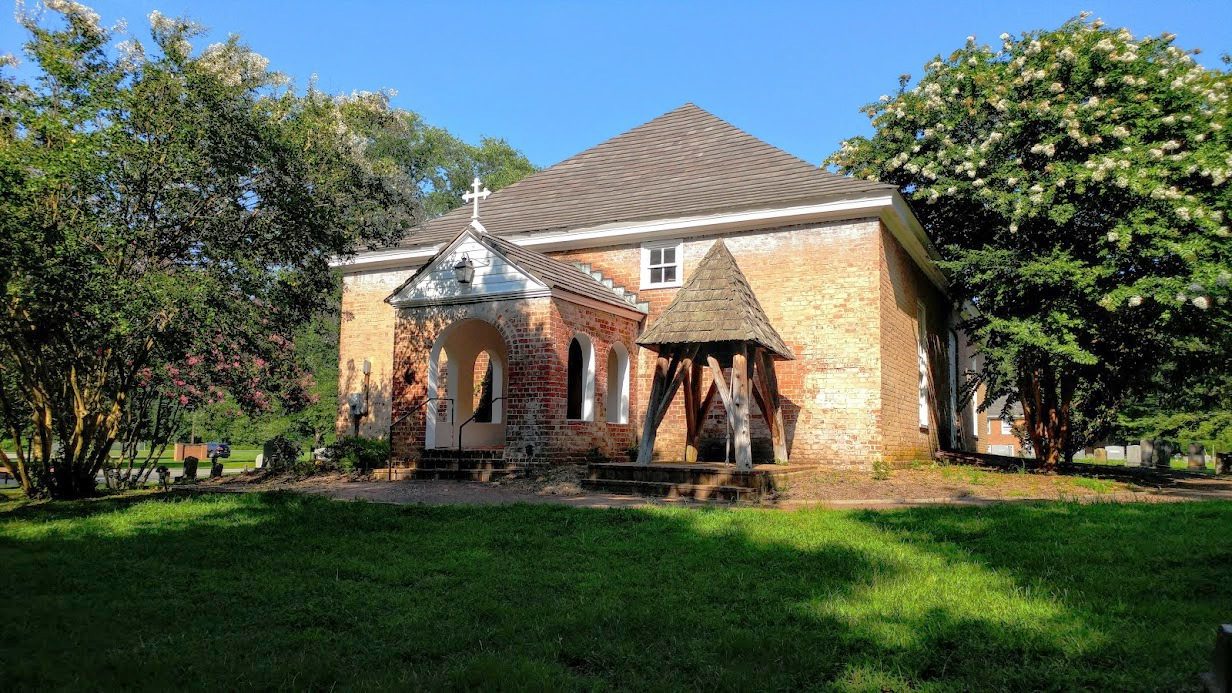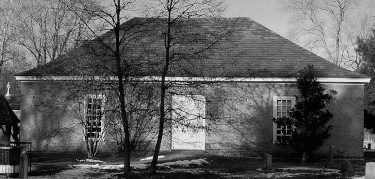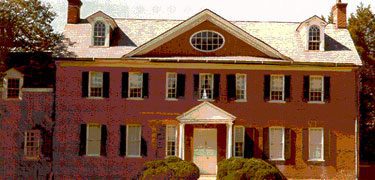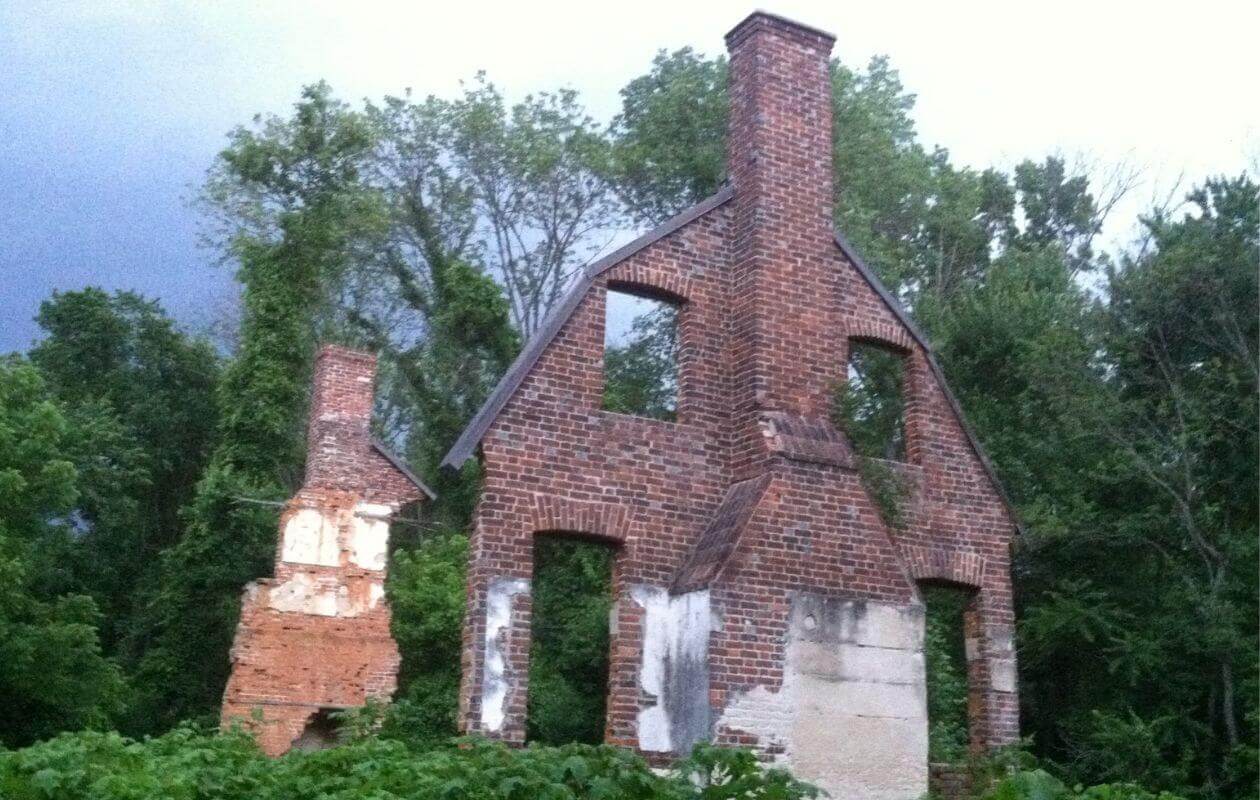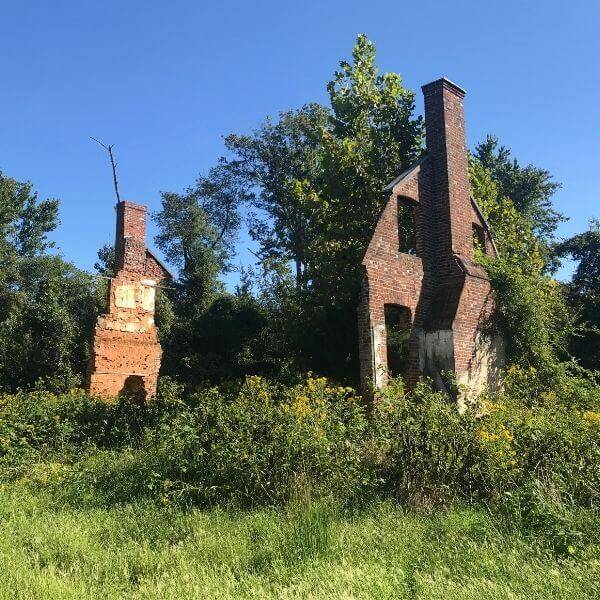Harmony Hall is a Georgian-style country house built c. 1760, probably by a wealthy merchant named Enoch Magruder. In 1662, the current Harmony Hall property was patented as “Battersea,” and was the site of one of the earliest settlements in the region. According to local legend, the house was renamed Harmony Hall during the 1790s, as a result of the marital harmony that blossomed there when two young couples rented the property after their nuptials.
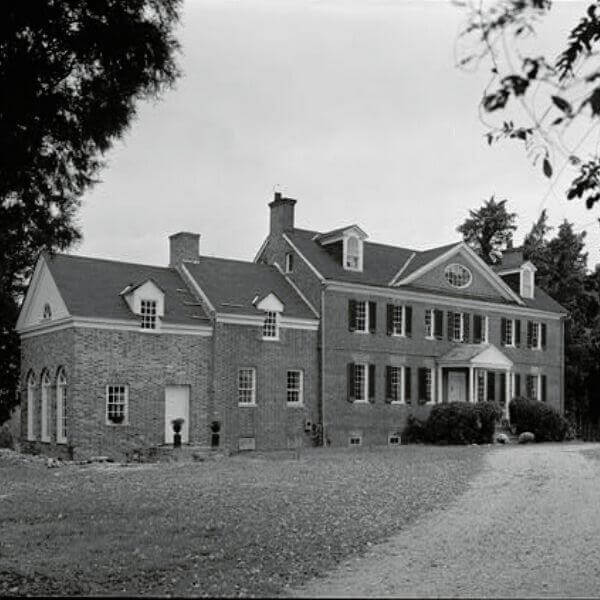
At the end of the nineteenth century, the house was owned by the Stein family, who founded the community of Silesia. During the first half of the twentieth century, it was owned by a government servant and political author named Charles Wallace Collins, who “restored” the property to resemble an antebellum Old South plantation. The Park Service acquired the property during the 1980s, and leased it to individuals who where later evicted from Harmony Hall (1999). The property was left to stagnate and decline.
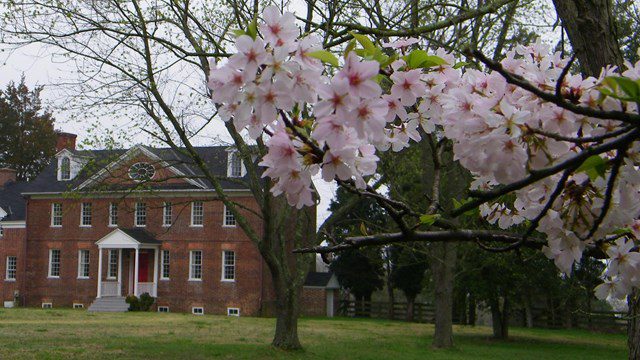
A Georgian mansion of red brick set in Flemish bond, Harmony Hall is two-and-one-half-stories and one room deep. It once had north and south wings, which collapsed or were demolished before 1929. The two south wing extensions were built in 1941 and 1987 respectively.

